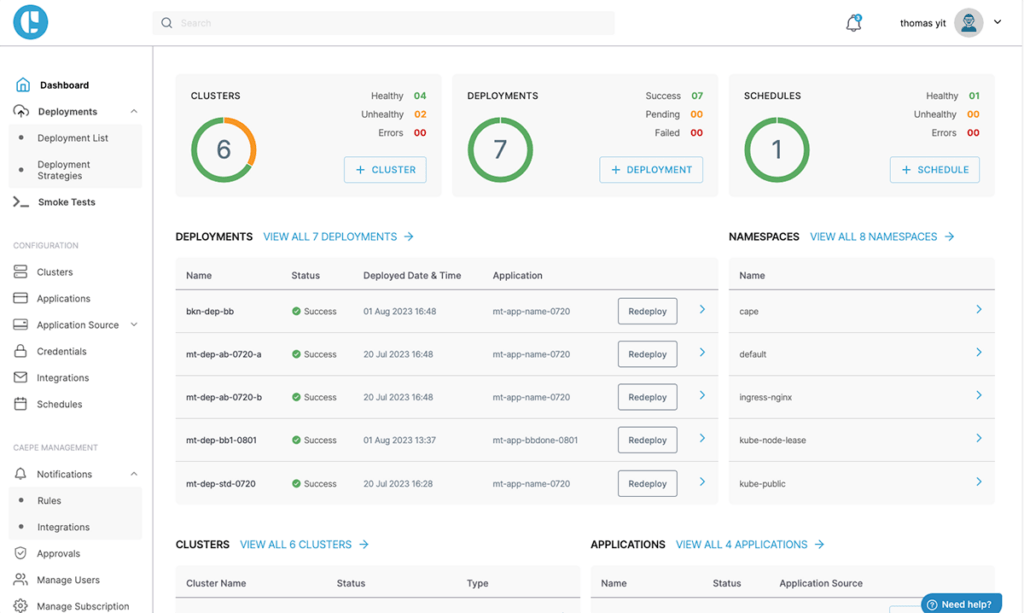Use Cases.
CAEPE: A Comprehensive Control Plane for Kubernetes Application Deployments
CAEPE™ serves as a centralized control plane for managing Kubernetes-based application deployments across multiple clusters and environments.
Engineering teams, including developers, QA, and DevOps, rely on CAEPE for seamless management of applications in production and at scale, where quality, consistency, and deployment speed are crucial.
- Enhance Deployment Quality and Consistency
- Accelerate Time to Market
- Manage Software Upgrades and Execute Deployment Strategies
- Test Production Applications and Kubernetes Versions
- Support Regional and Global Deployments
- Bridge Kubernetes Skill Gaps
- Address Enterprise Requirements
- Reduce DevOps Team Effort and Reliance
Enhance Deployment Quality and Consistency
CAEPE addresses the challenges of maintaining consistent deployments, particularly for large and distributed teams, by enforcing deployment quality and consistency in several ways.
Engineering leads can define and enforce application definition and cluster namespaces for all deployments.
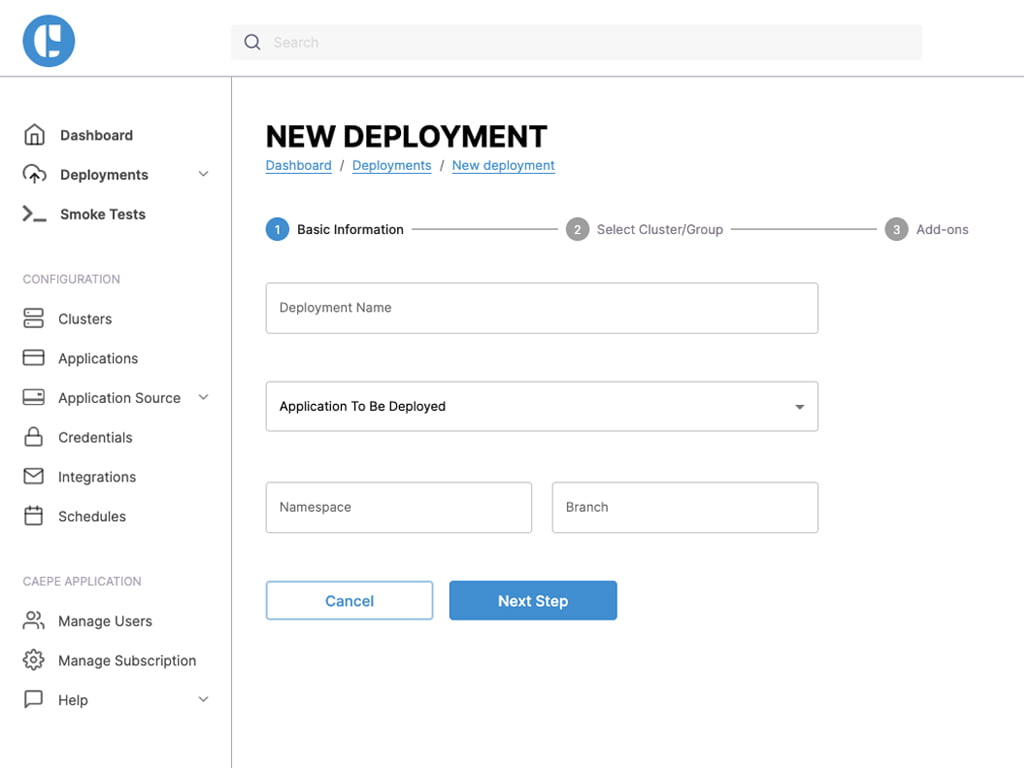
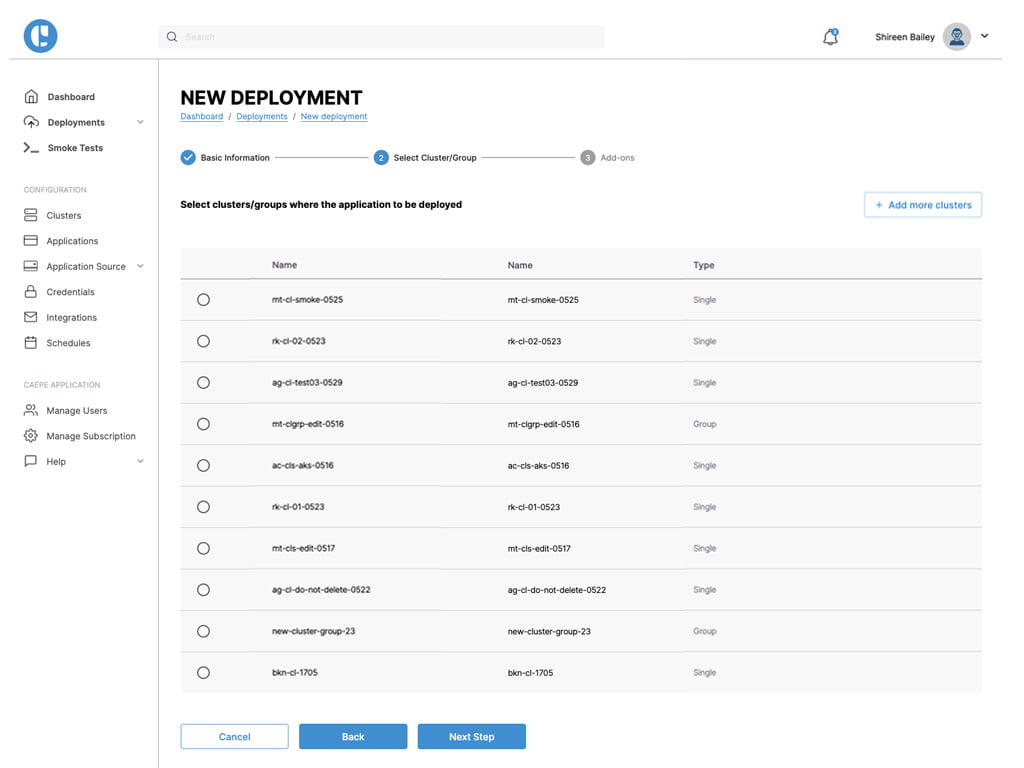
Engineers can save time and effort by utilizing CAEPE’s guided workflows and options for generating deployment definition scripts or CLI commands, reducing the possibility of script errors causing deployment issues.
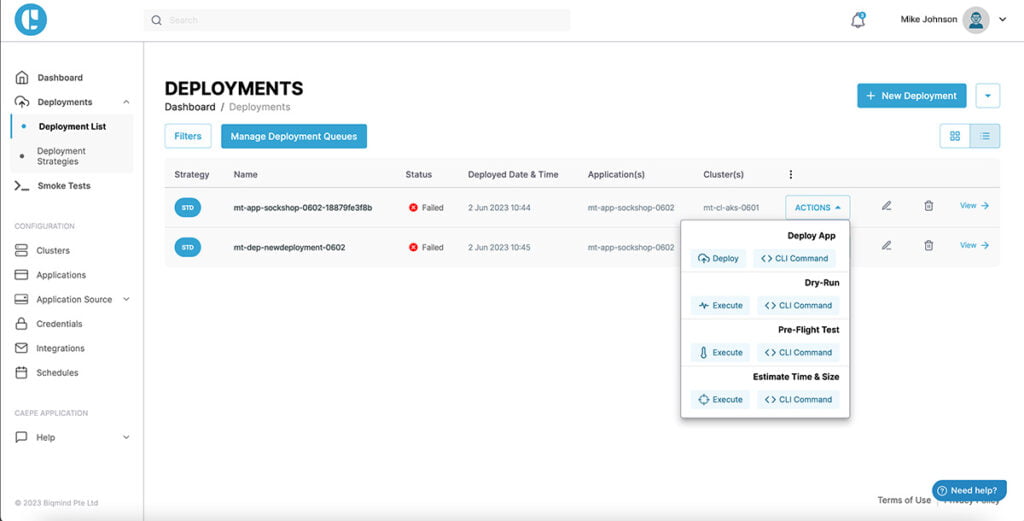
Automation via scripts helps teams meet deployment SLAs.
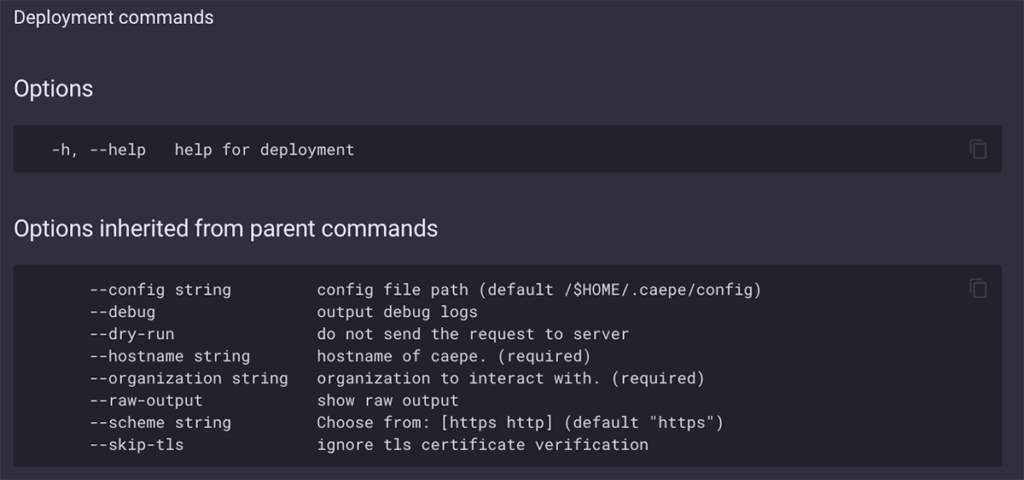
Engineers supporting multiple locations benefit from reduced maintenance and debugging efforts, as they no longer need to understand unfamiliar deployments.
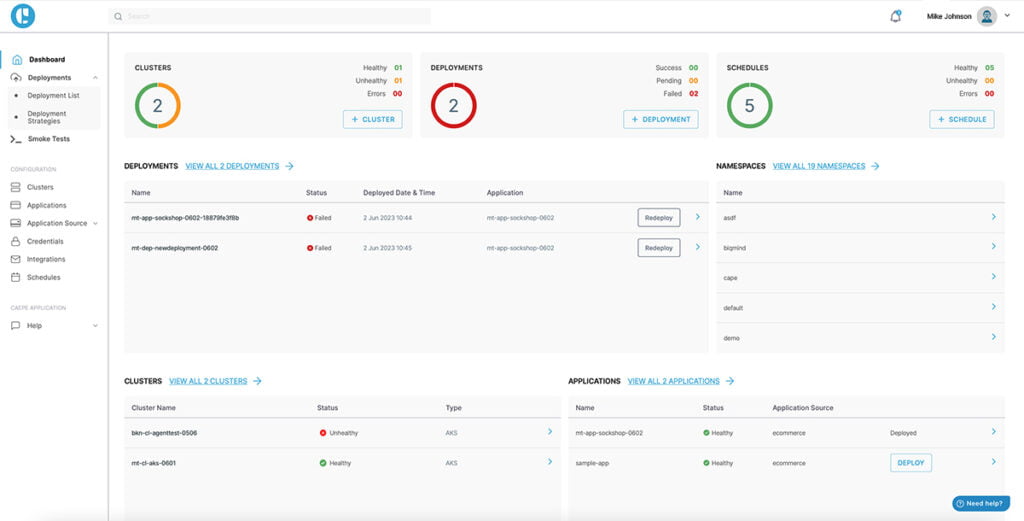
Accelerate Time to Market
By using CAEPE, engineering teams reduce the time required to onboard and release new applications to end users. CAEPE allows DevOps teams to automate pipelines and manage workflows and tests, while developers and QA engineers can build deployment plans based on guided workflows and prescribed tests without relying on DevOps.
Manage Software Upgrades and Execute Deployment Strategies
When it comes to software upgrades, DevOps teams employ various progressive delivery strategies to ensure positive end-user experiences, minimal downtime, and seamless transitions. CAEPE offers guided, UI-based workflows for each deployment strategy, enabling users to efficiently deploy, control routing, and tag new versions based on cluster groups for testing new features.
Popular strategies include: A/B Deployment, Blue/Green Deployment, and Canary Deployment, all of which can be challenging to implement for Kubernetes-based applications.
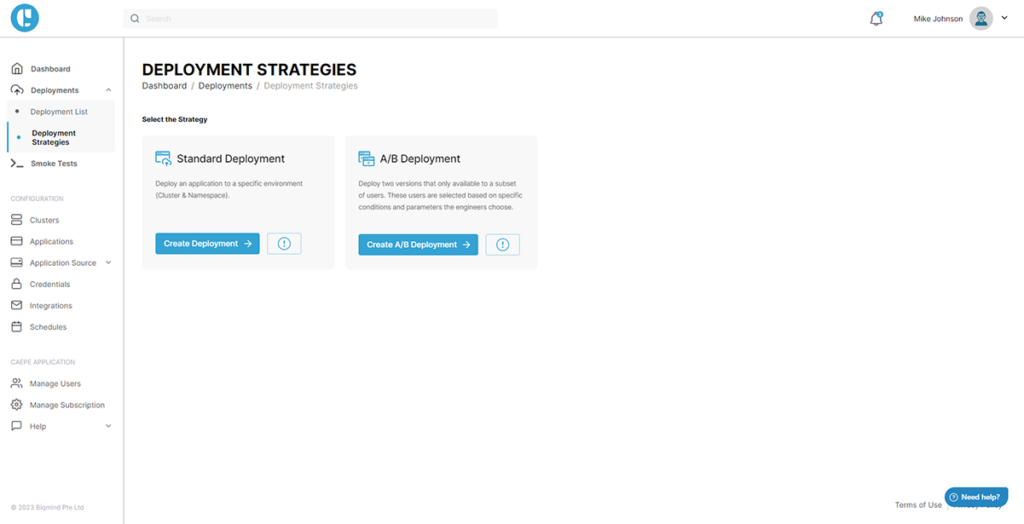
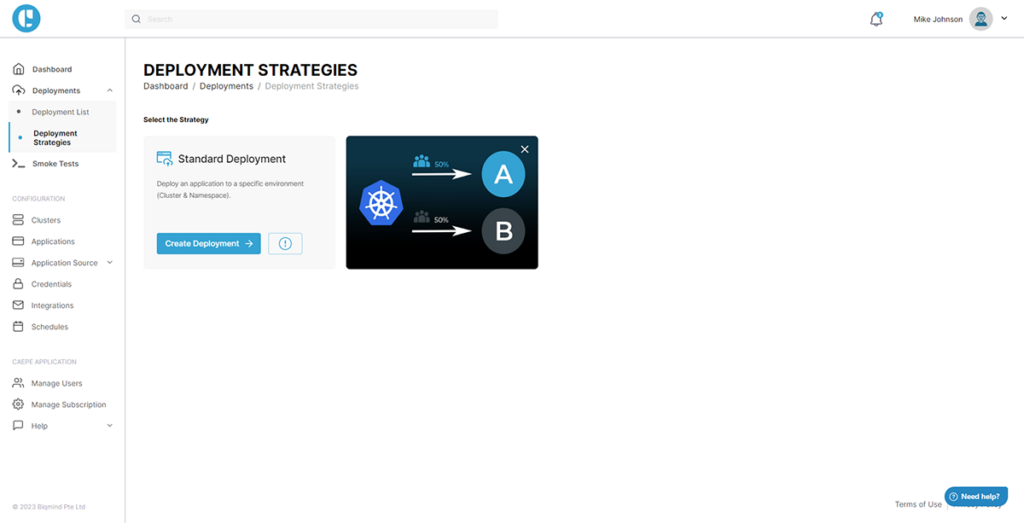
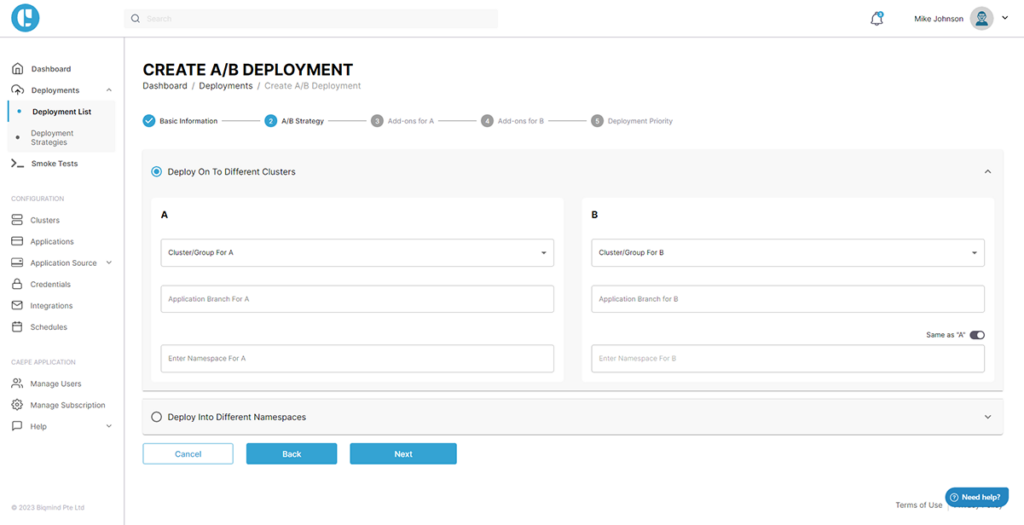
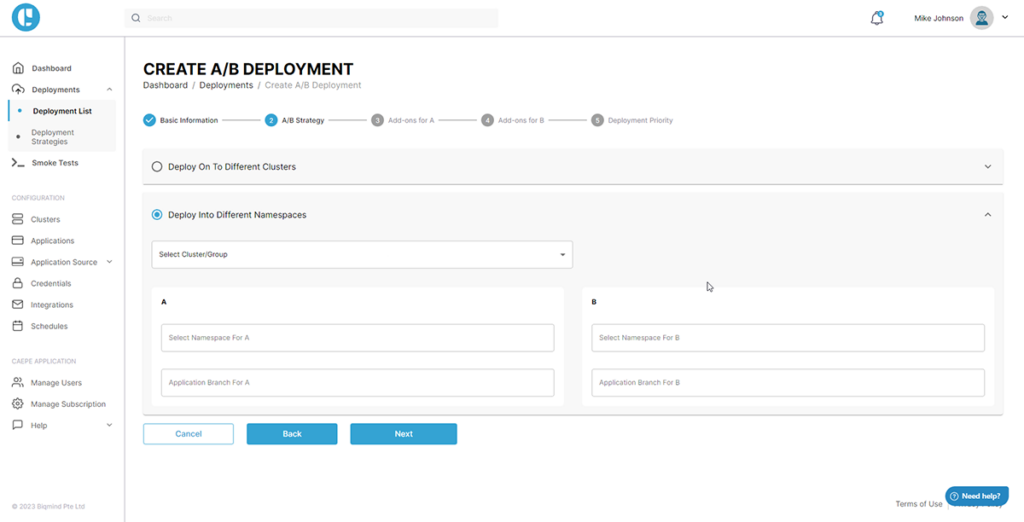
Test Production Applications and Kubernetes Versions
Engineering teams often need to test new production deployments for scalability & reliability and may want to evaluate existing applications on newer Kubernetes versions. CAEPE streamlines these testing scenarios through its UI, allowing users to deploy applications, initiate tests, and handle rollbacks or deployment to remaining clusters based on test results. Users can rapidly create cluster versions with new Kubernetes releases, snapshot and restore production applications and data, and run smoke tests to ensure functionality.
Learn more about smoke testing your Kubernetes clusters in minutes with CAEPE.
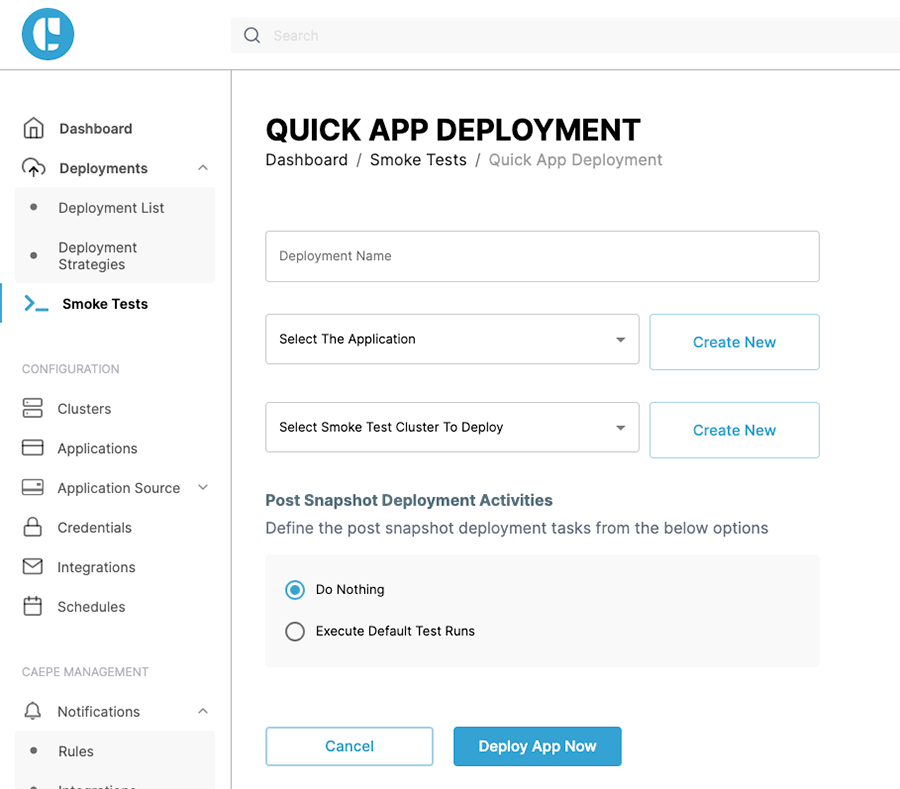
Support Regional and Global Deployments
CAEPE simplifies management of regional and global deployments by offering one-click deployment to various environments, enabling users to enforce data protection policies and comply with regional requirements.
Bridge Kubernetes Skill Gaps
CAEPE provides an easy-to-use web-based UI for common and advanced deployment tasks, enabling DevOps engineers to share responsibilities with the larger team and abstracting the process from the native Kubernetes layer for progressive delivery strategies.

VS.
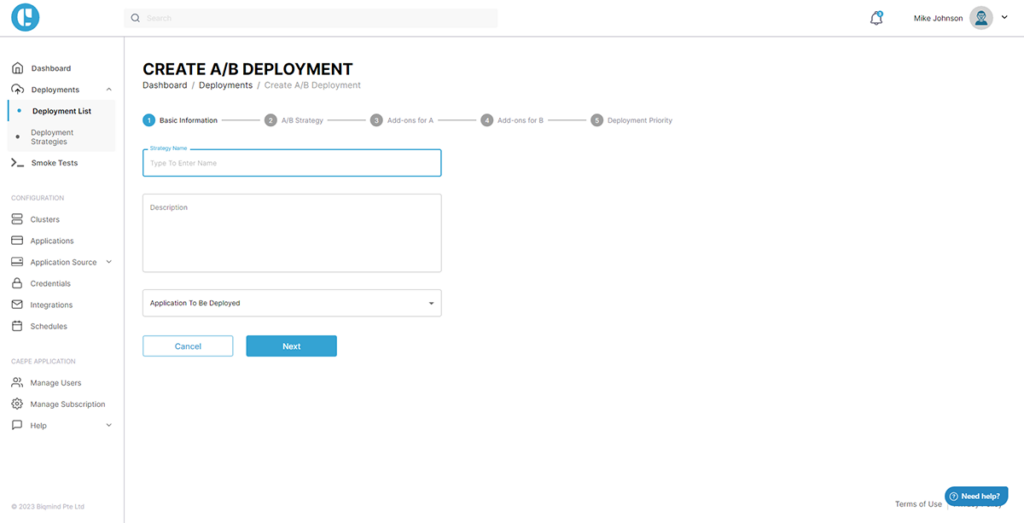
Address Enterprise Requirements
CAEPE helps organizations meet their enterprise needs for Kubernetes applications, including deployment permissions and visibility, unified deployment approach, and business continuity planning.
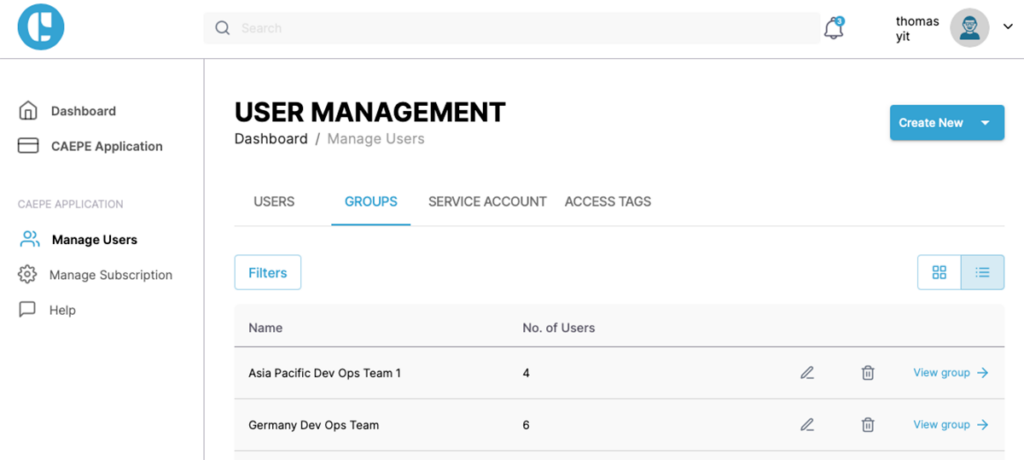
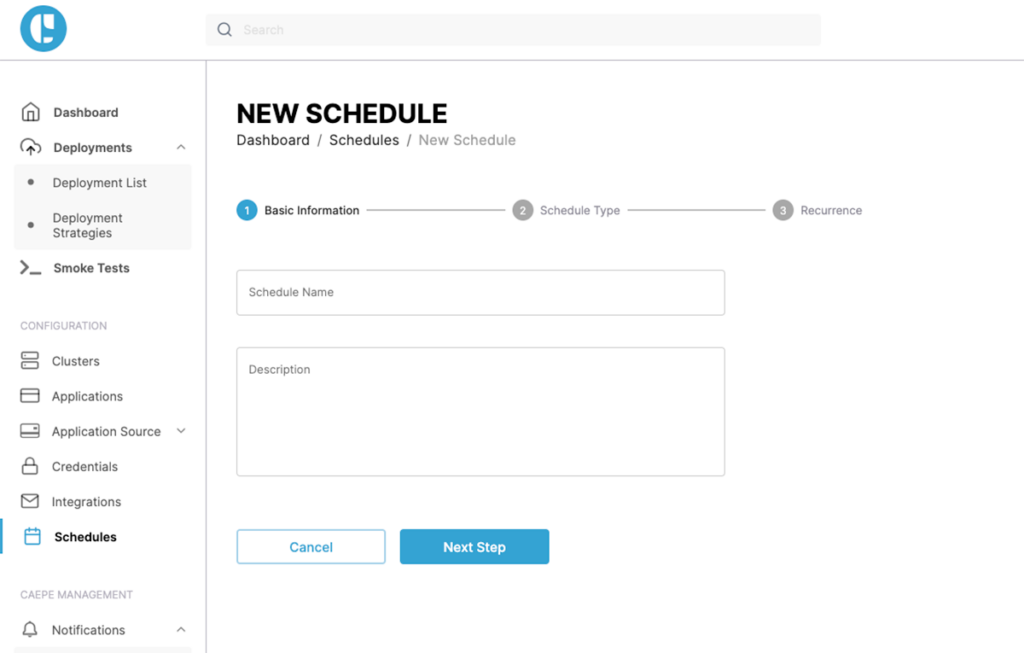
Reduce DevOps Team Effort and Reliance
CAEPE significantly cuts down the time and effort DevOps teams spend on deployment, enabling them to focus on optimizing applications in production clusters. With CAEPE, QA engineers and developers can manage their own deployments, and teams can spin up short-term clusters for quick tests and development checks.
